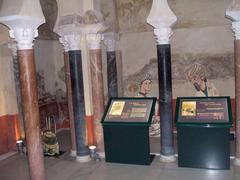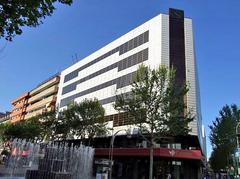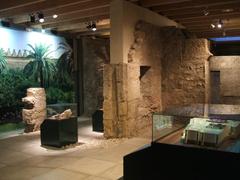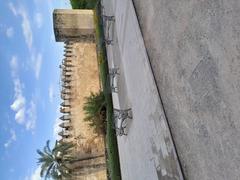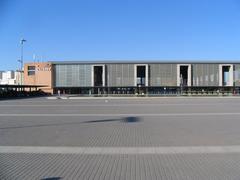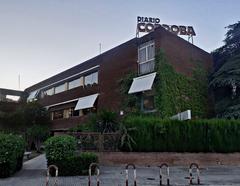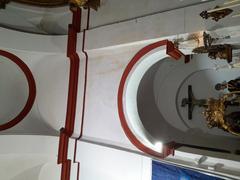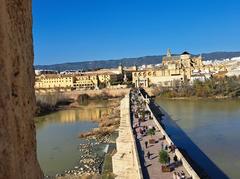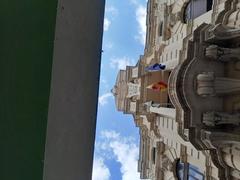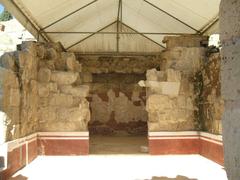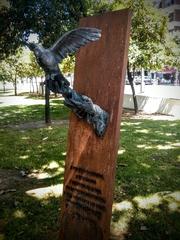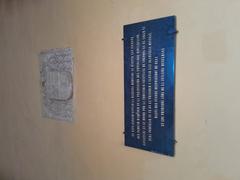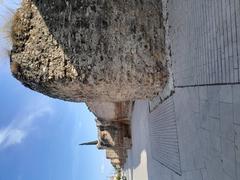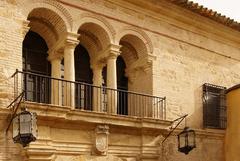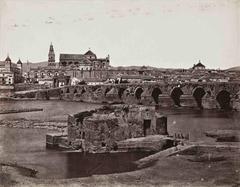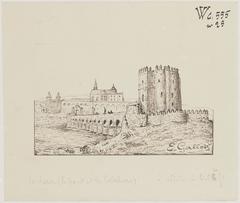Molino de Lope García: Visiting Hours, Tickets, and Historical Sites in Córdoba
Date: 14/06/2025
Introduction
The Molino de Lope García stands as a testament to Córdoba’s centuries-old mastery of hydraulic engineering and its enduring relationship with the Guadalquivir River. As one of the city’s best-preserved historic watermills, this landmark offers a captivating window into Córdoba’s industrial, architectural, and cultural evolution from the Islamic period to modern times. Although the interior remains private and inaccessible, visitors are drawn to its riverside setting, robust stone architecture, and the picturesque views it offers—making it a compelling stop for those exploring Córdoba’s historical heritage.
This comprehensive guide details the history, architectural features, visitor information, and practical tips for experiencing the Molino de Lope García, along with insights into its broader context among Córdoba’s iconic riverside monuments. For further details and updates, please consult resources such as Diario Córdoba, Visit Southern Spain, and the official Córdoba tourism website.
Historical Overview
Origins and Early Development
The origins of the Molino de Lope García trace back to the Andalusí period (8th–13th centuries), when Córdoba flourished as a center of culture and science under Islamic rule. Positioned strategically along the Guadalquivir, the mill was integral to the city’s agriculture and commerce, utilizing innovative waterwheel technology—locally known as “aceña,” a term of Arabic origin (Diario Córdoba).
Transition and Expansion
Following the Christian reconquest in the 13th century, ownership of the mill shifted to the Cathedral Church, mirroring broader patterns of property redistribution during this era. Throughout subsequent centuries, the mill expanded in technological capacity; by the early 17th century, records indicate it operated up to nine millstones simultaneously, reflecting significant industrial output (Diario Córdoba).
Industrialization and Modern Use
The 19th century brought secularization—ownership passed into private hands during Spain’s desamortización reforms. By 1877, the Molino de Lope García was modernized as a flour factory, keeping pace with new industrial trends. In 1942, it was acquired by Compañía Carbonell, a major producer of olive oil and flour. The traditional water-powered operations ended in 1982, after which the site has been primarily used as a warehouse (Diario Córdoba; es.wikipedia.org).
Architectural and Technological Features
- Location: Right bank of the Guadalquivir, near the Las Quemadas industrial area, about 5 km east of Córdoba’s historic center (mapcarta.com).
- Structure: The mill is composed of two main sections separated by overflow channels (aliviaderos). The lower levels are built of stone, with 19th-century upper stories in brick, featuring arched lintels and putlog holes.
- Hydraulic Engineering: Water power was managed via an “azuda” (weir) spanning the river, channeling flow into vaulted milling chambers. Each chamber housed millstones above cylindrical wells for efficient grain processing.
- Preservation: While the machinery is no longer functional, the mill’s robust stonework and distinctive profile remain visible from the riverbank, reflecting centuries of adaptation and use (es.wikipedia.org).
Cultural and Historical Significance
The Molino de Lope García is part of a larger network of historic watermills along the Guadalquivir, including the renowned Molino de la Albolafia and Molino de Martos. Together, these structures highlight Córdoba’s pivotal role in the development of hydraulic technology and its economic history. The mills were central to food production, local industry, and social cohesion for generations (cordobaspain.home.blog; en.wikipedia.org).
In recognition of their significance, the Guadalquivir mills were declared an Andalusian Historical Heritage Site in 2009 (es.wikipedia.org). While some have been restored and repurposed as museums, the Molino de Lope García remains a privately owned monument, accessible only from the exterior.
Visiting Information
Visiting Hours & Tickets
- Interior Access: The mill is private property; interiors are not open to the public.
- Exterior Viewing: The riverside paths and exterior of the mill are accessible at any time, free of charge.
- No Tickets Required: As there are no official tours or interior access, no admission fee is charged.
Getting There
- Location: Near the Las Quemadas industrial estate, on the right bank of the Guadalquivir, about 5 km east of Córdoba’s historic center.
- Access: Reachable by car, bicycle, or on foot via hiking and cycling routes following the river (wikiloc.com).
- Recommended Route: Many visitors combine a walk or bike ride along the river, passing Molino de Martos and Molino de Carbonell, for a deeper appreciation of the area’s industrial and natural heritage.
Accessibility & Safety
- Terrain: Riverbank paths may be uneven or slippery, especially after rain. Sturdy footwear is strongly recommended.
- Facilities: The mill’s immediate surroundings have limited amenities; restrooms and refreshments are available in the historic center.
- Visitor Etiquette: Please respect private property by not attempting to enter the building.
Photography and Best Visiting Times
- Best Light: Early morning or late afternoon provides excellent lighting for photography and a tranquil atmosphere (Visit Southern Spain).
- Scenic Views: The riverside location offers panoramic shots of the mill against the Guadalquivir and Córdoba’s skyline.
Nearby Attractions
- Córdoba Historic Center: Mezquita-Catedral, Roman Bridge, and Alcázar de los Reyes Cristianos are all within a short drive or bike ride (thecrazytourist.com).
- Sotos de la Albolafia: A protected ecological corridor along the river, perfect for birdwatching and nature walks.
- Other Mills: Explore Molino de Martos and Molino de Carbonell on the same route.
Conservation and Future Prospects
While the Molino de Lope García has not undergone major restoration, its continued use as a warehouse has preserved much of its structure. Discussions about future restoration and adaptive reuse exist, but no confirmed projects are underway as of June 2025 (diariocordoba.com).
Frequently Asked Questions (FAQ)
Q: Can I visit inside Molino de Lope García?
A: No, the building is private and not open for interior visits. The exterior can be appreciated from public paths.
Q: Are tickets or fees required?
A: No, exterior viewing is free and accessible at any time.
Q: How do I reach Molino de Lope García?
A: It is located near Las Quemadas industrial estate, about 5 km from central Córdoba, accessible by car, bike, or on foot.
Q: What other historic mills can I see nearby?
A: Molino de Martos and Molino de Carbonell are close by and accessible along the same riverside path.
Q: Is the site accessible for people with disabilities?
A: The riverbank paths are generally accessible, though some terrain may be uneven.
Visuals and Media
- Images: Look for photographs with alt text such as “Molino de Lope García historic watermill exterior in Córdoba” for optimal search visibility.
- Maps: Interactive maps and walking routes are available via Wikiloc.
Additional Resources
- Official Córdoba Tourism Website
- Diario Córdoba - Antiguos Molinos de Córdoba
- Walking Routes along the Guadalquivir Watermills
- Museum of Paleobotany (Molino de la Alegría)
- Molinos del Guadalquivir in Córdoba – Wikipedia
- Best Things to Do in Córdoba – The Crazy Tourist
Summary
The Molino de Lope García is a vital part of Córdoba’s rich tapestry of history, technology, and cultural exchange. Though visitors cannot enter the building, its well-preserved exterior, riverside setting, and proximity to other historical sites make it an enriching stop for heritage enthusiasts. As conservation discussions continue, the mill stands as a tangible reminder of the city’s ingenuity and enduring ties to the Guadalquivir River.
For further updates, route planning, and guided tour options, consult the official Córdoba tourism website and download the Audiala app for insider tips.
All factual information is based on the latest available sources as of June 2025. For up-to-date details, please refer to official Córdoba tourism resources and local heritage organizations.
